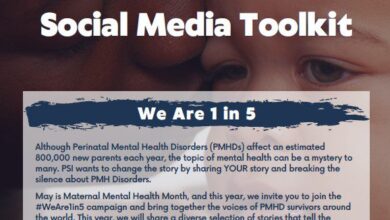Intersections Between Disordered Eating and Reproductive Trauma

Trigger warning: this article contains mention of reproductive trauma.
As an eating disorder therapist, I think more attention should be paid to the intersections between disordered eating and reproductive trauma. As awareness grows of the ways that pregnancy can be a risk factor for developing or worsening an eating disorder, I feel that a missing piece of the conversation is the ways that the struggle to get pregnant and pregnancy loss can contribute to disordered eating.
Although infertility, pregnancy loss, and other forms of reproductive trauma are common, as a culture we tend to see these experiences as abnormal and rare because they are so stigmatizing and, therefore, not explicitly discussed. I believe this mentality contributes to a great deal of shame and blame. People who experience reproductive trauma are often made to feel broken and inadequate, like they don’t deserve to be parents, or like they’re doing something wrong that causes them to be infertile or lost. In the infertility and TTC space, there can be intense pressure to do everything possible to maximize the possibility of pregnancy and live birth, along with a subtle (or not so subtle) message that infertility or loss is the result of failure to do so.
This can lead to an incredible perfectionism in many areas of life, and it is not surprising that it is commonly seen around food. Diet culture is a term used to describe the ways in which our society moralizes food, viewing certain foods as healthy and “good” and other foods as unhealthy and “indulgent.” Diet culture is pervasive in the fertility space. It’s not hard to see how this can lead people experiencing reproductive trauma to obsess over the quality and quantity of food they eat, and examine their plates and bodies in a way that interferes with their mental health. While disordered eating often results at least in part from the belief that one is not “good enough” or not doing enough to deserve good things/happiness/health/etc., What’s so dangerous about disordered eating is that for many people who struggle with it, no amount of limiting foods or exercising feels like “enough.” The messaging in diet culture can find something negative to say about almost any food or food group, and many individuals are left feeling as though nothing is completely safe to consume. In general, it is rare for people experiencing reproductive trauma to be told that they are doing enough to achieve pregnancy and live birth, and instead, it is common for people to continue to be given advice and directives about what they should do. even more. . This, combined with diet culture, can lead down a dangerous path of relentless restriction, compulsive exercise, and all-consuming obsession with food. It is all too common for the body, food, and movement to become a site of scrutiny and judgment rather than a source of comfort, pleasure, or nourishment.
It’s important to name weight stigma in conversations about diet culture and disordered eating. Weight stigma – that is, the idealization of thinness, the pathologization of fatness, and the belief that thinness is inherently healthier than being fat – accompanies diet culture and is a major contributor to disordered eating. As a culture, we tend to assume that being in a larger body is the result of poor food and exercise choices and that people in larger bodies are to blame for any health issues they may be experiencing due to those choices. this. In reality, body size variation is natural and normal; our body size has more to do with genetics and other factors outside of our control than food choices or exercise. (I recognize that this is a different perspective than many people have heard and goes against much of what we are told about body size. Please see below for a list of resources to learn more.) Unfortunately, in fertility spaces, people with large bodies are often blamed for their reproductive trauma. Larger-bodied people are often denied fertility treatment because of their BMI or have infertility and infertility blamed on their body size without other factors being investigated. This, of course, can cause disordered eating and body image anxiety and puts people with larger bodies at a particularly high risk of these concerns.
Another way reproductive trauma can intersect with disordered eating is that disordered eating can sometimes result from the need to release pain. Many people with eating disorders feel that their emotional pain and struggle is not valid or legitimate unless it is manifested in the form of appearing thin. This thinking is fueled by our cultural misconceptions about eating disorders – A big misconception is that it is possible to tell if someone has an eating disorder, as well as what type and severity of their eating disorder, based on their body. Although this is highly inaccurate, and people of any body size can develop an eating disorder, this misconception can make people feel that their illness is not important unless they is below a certain weight.
Similar to our misconceptions about unhealthy eating, our society also has many misconceptions about infertility, pregnancy loss, and where pain is and isn’t valid or legitimate. People who experience infertility and early pregnancy are often not given the space to grieve their losses. These losses are invisible to our society and are not seen as important or as worthy of space as other losses. This can contribute to individuals using disordered eating as a way to release pain and feel that their appearance needs to be seen to change in order to deserve the space to grieve.
Therapists and other professionals who work with people experiencing reproductive trauma need to check in with their patients about disordered eating and body image and be prepared to address these issues as they arise. It is also important for us to examine any implicit biases or beliefs we have that may inadvertently reinforce a patient’s disordered eating or negative body image. Because diet culture and weight stigma are so pervasive in our society, it’s easy for us to internalize and understand these ideologies without realizing it. Below are some suggestions for ways to address disordered eating and make sure you don’t reinforce it in your training:
- Screen all of your patients experiencing reproductive trauma for eating disorders. Don’t assume you can tell by someone’s body size if they have an eating disorder/disordered eating, or the type or severity of the eating disorder they have.
- Learn about the Health At Every Size paradigm. I recommend starting with the book Anti-Diets by Christy Harrison, which provides an excellent overview of some of the myths and facts about body size and why the assumption that obesity is unhealthy is inaccurate. The Food Psych and Maintenance Phase podcasts are also great resources.
- Develop a working knowledge of fat-positive and eating disorder-informed fertility/loss resources to refer to. Find out which health care providers in your area are sensitive to the needs of people with larger bodies and people with a history of disordered eating. One educational resource that can help to point patients toward is the work of the fat-positive fertility coach. Nicola Salmon.
- Advocate for the needs of your patients in healthcare settings, as this can be an area where weight stigma is prevalent and can lead to disordered eating. If you are working with someone with a history of disordered eating who is undergoing fertility treatment, ask that their weight not be discussed during appointments.
- Understand and recognize how reproductive trauma may intersect with risk factors for disordered eating, including perfectionism, minimizing emotional pain, and social stigma. Check in with your patients about how these factors may affect them.
Body size resources:
Eating disorder resources:
PSI Specialized Services: Eating Disorders
Learn More About Perinatal Mental Health
Get Help: PSI Services





